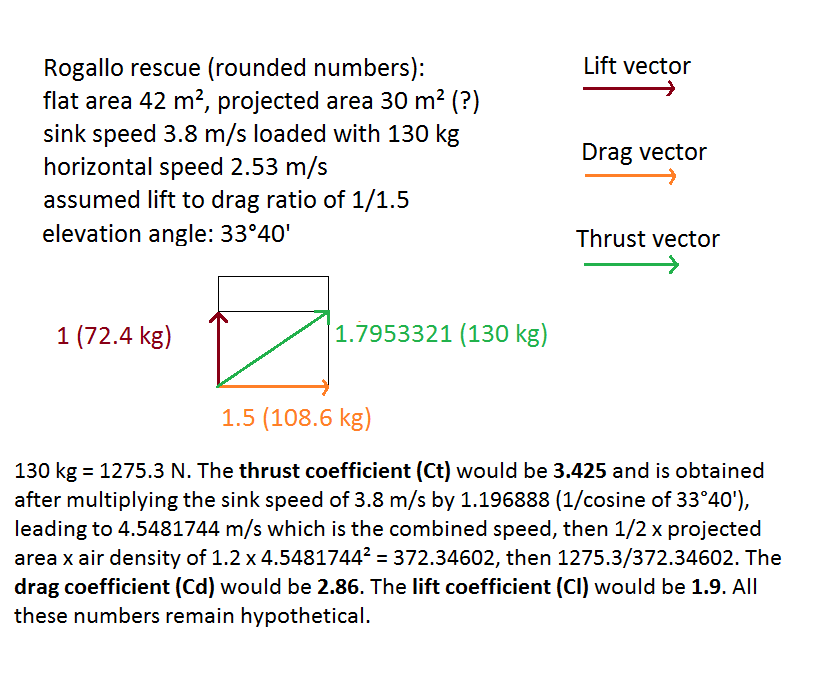Imagine what the dimensions might be of a completely drag-based kite much like a spinnaker. I think they would be superior to high glide ratio wings, but I’m not sure. And our Rogallo would be intermediate.
In fact I don’t know anything about it: you’ll have to try it and see what happens.
Maybe the distant anchors would be a factor in scalability, but again I’m not sure.
Page 10, the document below mentions “tangential force T (along the axe)”. I prefer the term “thrust” (or also “pull”) which is also sometimes used, combining drag and lift force. The Chinese team uses also the term “thrust” in the Book of Abstracts (AWEC2024), page 37: “To tackle this problem, we numerically investigate the thrust coefficient (Ct)…” From DOI: 10.13140/RG.2.2.32994.13762:
chinese umbrella description.pdf (1.3 MB)
That’s what I thought, but I’ve seen and cited a number of examples with Cd close to 3, including almost all rescue parachutes (obtained by the given sink speed and load, by guessing the projected area from the flat area). A very high Cd leads also to a high Cl even with a modest elevation angle, and I think this is possible due to the very high angle of attack.
I think a huge amount of research has been done to enable rescue parachutes to be compact and lightweight for the benefit of paragliders. The improvements focused on the increase in the Cd which is rarely given by manufacturers as such, but can be deducted.
